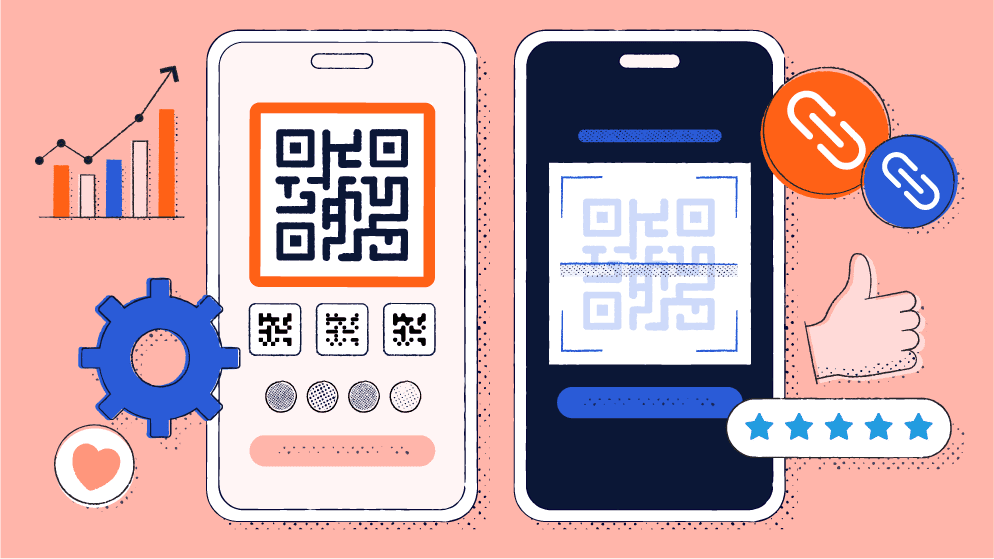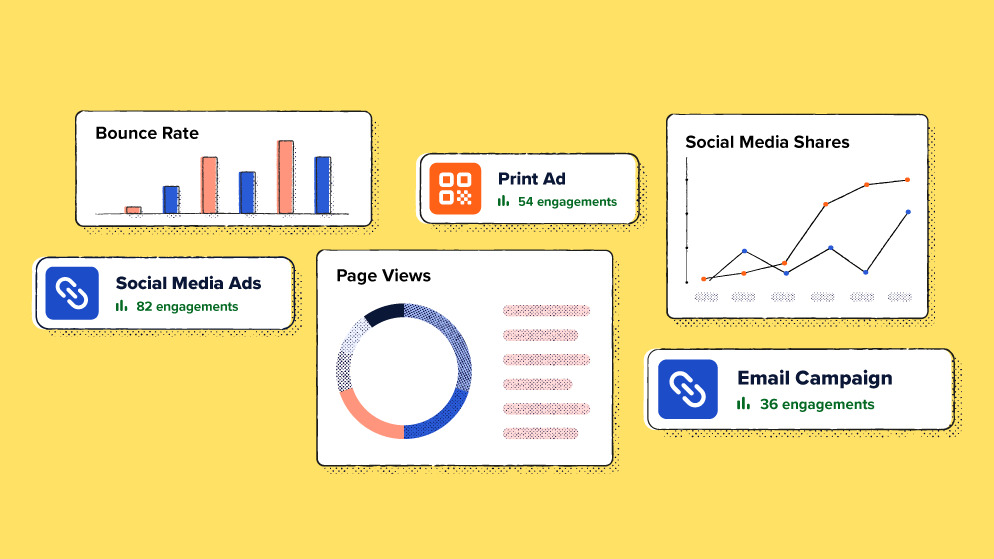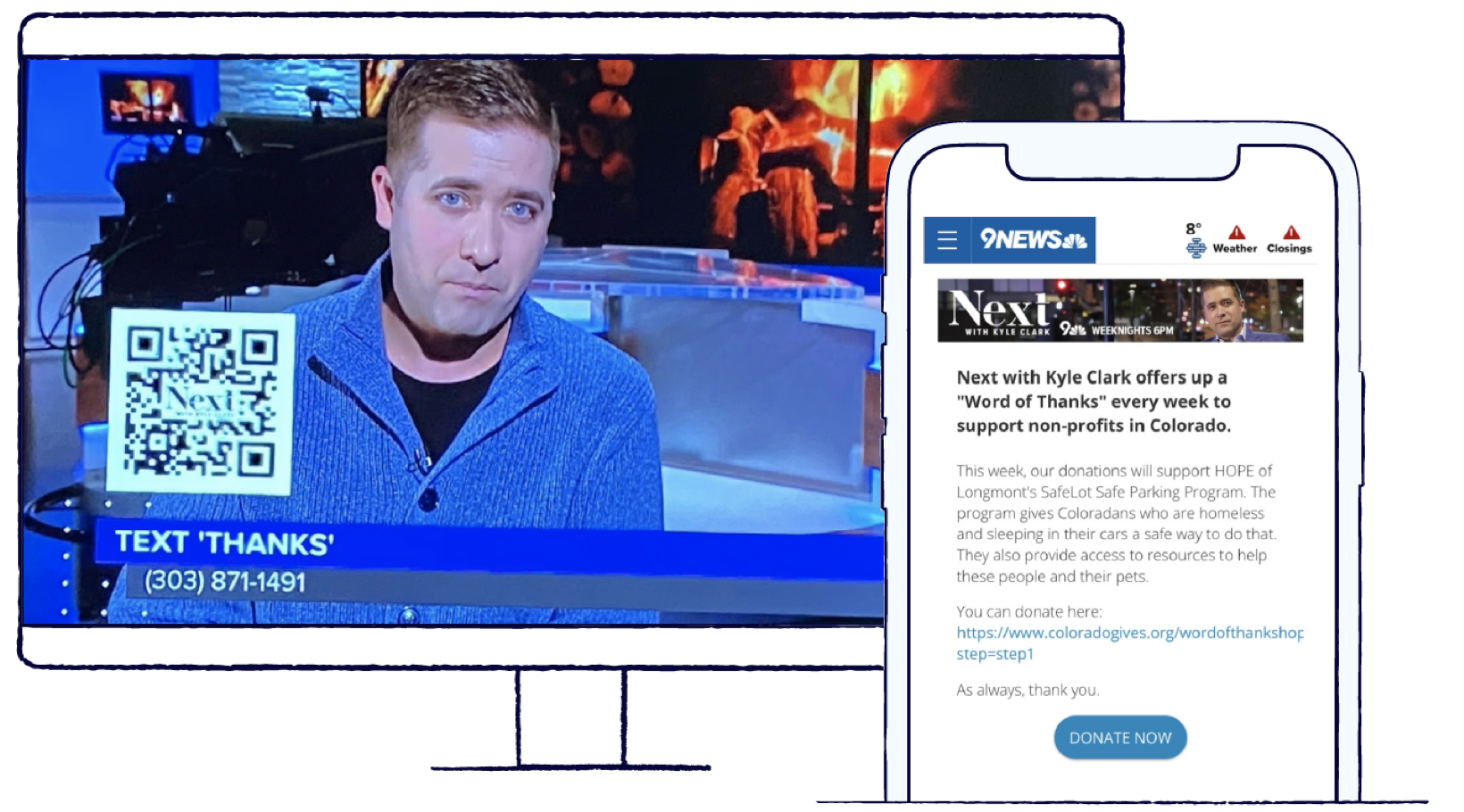
Before most people had a smartphone in their pocket and a laptop on their desk, the daily news was primarily a one-to-many medium—reporters presented the latest stories from the front page of newspapers and television screens to the masses. And while audiences still look to these channels to learn what’s happening in the world, they also engage with the news differently.
They get their updates from a wider range of digital platforms, and they’re eager to participate in the news cycle by sharing, contributing, and commenting on breaking stories. Media brands can (and should) adapt to this new normal by embracing interactive modes of connection like QR Codes and short links. Learn the benefits of using these tools on air during broadcasts, plus seven tactics you can try to engage your audience.
The breaking story behind the news
It’s no secret that consumers’ taste in news is changing: 86% of Americans say that they often or sometimes get the news from a device like a smartphone or computer, not to mention that a third of younger Americans who say they get news from TikTok.
Television continues to play a starring role in the news landscape, though—in 2023, a third of Americans (32%) said that they often looked to their televisions for news, with 27% preferring TV as a platform.
Even so, audiences’ growing reliance on digital news access means that broadcasters need to adapt the way they approach audiences. Networks need to be strategic about keeping viewers tuned in, despite the many distractions competing for their attention. They can do so by encouraging participation and building community through their programs.
One important resource for fueling this new way of reaching and keeping audiences is using QR Codes and short links on the air. Share any link during a broadcast using a scannable QR Code, or shorten a link into a shareable, trustworthy URL for viewers to engage more deeply with your news program. With these tools in hand (and on screen), the possibilities are endless.
Why QR Codes and short links are good news
QR Codes and short links are perfectly matched to help news broadcasters rethink how they connect with and engage audiences. Here are five benefits to trying this tech on your news programs.
You match audience preferences
Just as the news cycle moves 24/7 and is constantly changing, audiences are also always on the move. Their attention is pulled in countless directions, they switch between devices, and they try to focus on multiple things at once. This is a challenge for TV news, but one that smartphone-based tech can help broadcasters solve.
With a QR Code or a short link to engage in a community conversation online, you meet audiences’ needs to switch to their smartphone or computer in seconds to keep learning about the topic. They might be running late and need to turn the TV off, but you can give them access to a video or article to learn more from their phone on the go. Maybe they encounter your broadcast in a waiting room or at the gym, but a short link to keep reading later gives them the chance to stay tuned in.
You can connect with audiences in the way that they want to consume media via their preferred channel.
You get real-time data and analytics
Tracking metrics and attribution has been historically difficult for television, but newer tech makes analytics that much more accessible for broadcasters. With the help of viewers’ smartphones, media brands can give audiences an instant way to take action on what they’re seeing onscreen—by scanning a QR Code or visiting a short link in seconds.
From there, broadcasters can capture meaningful data about how many people scanned or clicked, what led them to take action, and where they’re located. This valuable information can help them shape how they present information, which calls to action they use, and even the kinds of sponsorships and partnerships they offer on air.

You allow faster information access and sharing
When audiences see a segment about their local community or an issue that impacts their lives, they’re eager to share it on social media or send it directly to their family and friends. That’s how they spread the word and take action to support causes they care about or engage in their community.
When you share a QR Code or short link during a broadcast, you make this process quick and easy for your viewers. These tools create a direct channel for the people in your audience (and their communities) to instantly access and share information so that important news comes to light faster.
You spark interactive engagement
An important way to keep audiences’ attention with so many distractions is to ask them to get involved. Ask them for their opinion or feedback, or invite them to participate in some way—for local, regional, and even national news, this helps people feel invested and encourages them to keep showing up to your program.
Audiences feel like a part of the news you’re uncovering when they can contribute to the conversation and share their opinion about what’s happening in their community. QR Codes and short links are an accessible way to directly connect your viewers to what’s happening in their world.
7 tactics to try on your news broadcast
Ready to start using QR Codes and short links to engage your audience? Try these seven ideas to drive traffic, build community, and increase the impact of your broadcast.
1. Story idea submissions
Invite your audience to help choose the stories you cover on air. Show a shareable short link on air that takes viewers to a form where they can describe a story they think you should tell or a person worth profiling. This is a great tactic for community-focused segments or a topical series that audiences can contribute to. Your viewers will feel heard, you can source stories your community cares about, and audiences will be eager to share the segment with their friends and family.
2. Polls and interactive Q&A
On-air polls have become a popular way to share real-time sentiments from not just one or two interviewees but an entire community. Provide a QR Code on screen or a short link to a poll or survey platform where viewers can share their thoughts on an issue before or during a story, giving more depth and perspectives to an issue. You can also use this approach to host a live, interactive Q&A during a segment. Rather than having viewers call in—which younger audiences, in particular, prefer not to do—give them the tools to send in a question online, and frame the program about what people want to know.
3. Additional media on a story
The news never stops—which means that every hour of your broadcast is packed with important and interesting information, so you can’t always share everything you recorded or reported for a given story. Want to take your listeners deeper? Take your viewers to additional media for a deeper look.
Did you capture additional video footage that didn’t air? Share a QR Code, and encourage them to watch the rest of the interview. Did your team create an infographic to share additional data? Let viewers dive deeper with a short link. You can also direct them to a written story that provides additional context or covers the story more fully than you did during an on-air segment.
Give viewers more information and solidify their perception of you as the go-to expert for everything that’s happening in their community.
4. Cross-channel coverage
Although you might want audiences to stay tuned into their television for your entire program, that’s not always possible. Invite them to keep watching by visiting other channels on a different device like their phone or laptop—those who are on the go or simply need to step away from their TV can keep engaging with your content on their terms. Just be sure to adjust your content for multiple channels: Create mobile-optimized experiences on your website, so your viewers can enjoy your content just as easily on their phones.
During times of ongoing, breaking news or live events, share a QR Code to a live stream on your YouTube channel or website, or a reporter’s social media feed that will be constantly updated. The convenience of cross-channel coverage makes your audience more likely to stay zeroed in on the news you’re sharing and grows your traffic and engagement across multiple aspects of your platform.
This is also a great way to help your audience engage in the conversation—you can take them to channels like social media or a forum where they can comment, share, or interact in a way they couldn’t by watching your TV program alone.
5. Branded or partnership content
Partner and sponsor content is a great way for news programs to not only share interesting topics with their audience but also drive revenue or charitable donations. QR Codes extend the reach of those conversations by inviting viewers to learn more about a sponsor, buy their book or product, or unlock a discount for viewers of your program.
What’s more, the traceability of QR Codes gives you (and your sponsors) advanced analytics to track scans and traffic so you can show sponsors the audience engagement and ROI from their sponsorship.

6. Schedule and topic overviews
Encourage your audiences to come back to your content again by sharing a QR Code that takes them to your upcoming schedule and maps out stories you’ll be telling later in the program. They might see a topic they want to know more about, a local expert they want to hear from, or even spot a featured story with a person or business they’re excited about. That preview of your schedule can keep them watching or prompt them to tune into your website content later.
7. Social connections
Social media channels are a great place to help your audience get involved with their local news, especially when a topic is close to their heart. Share a short link on your program to your social media channels, and encourage them to follow, visit, and comment in real time. You’ll gather community feedback quickly and can even share their insightful takes on future broadcasts.
Treat new tactics as an experiment to grow
In 2021, a New York City news station began using QR Codes during its weather broadcast as an experiment. The result was 19,000 new website visitors—and the network has continued to see growth as the team expanded its strategy for QR Codes during broadcasts. The team aims to continue breaking its own records and “bust the legacy mindsets,” said the network’s VP of digital news.
This approach is the perfect way to think about new tools like short links and QR Codes. Try different methods and calls to action as you incorporate them into your broadcasts. Lean on the data and analytics they bring to learn about your audience and keep experimenting. You’ll deepen your audience’s connection and engagement with their local news, and rally your community around you in the process.